My husband was reading the New York Times and brought an article to my attention that he thought I might want to note for use on HorseHints.org. The article, "A Bespoke Perfume", was published in the New York Times, dated Sunday, March 14, 2015, in the Business Section. The article starts out "A signature scent can cost $30,000 to $50,000 to create, and hundreds of dollars a bottle after that. For Some, it's worth it. ..." I must say the article did peak my interest so I decided to do this article about perfume: horse and horse related scents. Also, in my research I was amazed to see that so many bottles, etc., are fashioned referencing the horse!
So----What about perfume? "...Perfume or parfum is a mixture of fragrant essential oils or aroma compounds, fixatives and solvents used to give the human body, animals, food, objects, and living spaces 'a pleasant scent.' Perfumes have been known to exist in some of the earliest human civilizations, either through ancient texts or from archaeological digs. Modern perfumery began in the late 19th century with the commercial synthesis of aroma compounds such as vanillin or coumarin, which allowed for the composition of perfumes with smells previously unattainable solely from natural aromatics alone. ...The word perfume derives from the Latin perfumare, meaning 'to smoke through.' Perfumery, or the art of making perfumes, began in ancient Mesopotamia and Egypt, and was further refined by the Romans and Persians.
The world's first-recorded chemist is considered to be a woman named Tapputi, a perfume maker who was mentioned in a cuneiform tablet from the 2nd millennium BC in Mesopotamia. She distilled flowers, oil, and calamus with other aromatics, then filtered and put them back in the still several times. In India, perfume and perfumery also existed in Indus civilization (3300 BC-1300 BC). One of the earliest distillation of Ittar was mentioned in the Hindu Ayurvedic text Charaka Samhita and Sushruta Samhita.
In 2004-2005, archaeologists uncovered what are believed to be the world's oldest perfumes in Pyrgos, Cyprus. The perfumes date back more than 4,000 years. They were discovered in an ancient perfumery, a 4,000-square-metre (43,000 sq. ft.) factory housing at least 60 stills, mixing bowls, funnels, and perfume bottles. In ancient times people used herbs and spices, such as almond, coriander, myrtle, conifer resin, and bergamot, as well as flowers.
...The Arab chemist Al-Kindi (Alkindus) wrote the Book of the Chemistry of Perfume and Distillations in the 9th century, which contained more than a hundred recipes for fragrant oils, salves, aromatic waters, and substitutes or imitations of costly drugs. The book also described 107 methods and recipes for perfume-making and perfume-making equipment, such as the alembic (which still bears its Arabic name. ...
...The Persian chemist Ibn Sina (also known as Avicenna) introduced the process of extracting oils from flowers by means of distillation, the procedure most commonly used today. He first experimented with the rose. Until his discovery, liquid perfumes were mixtures of oil and crushed herbs or petals, which made a strong blend. Rose water was more delicate, and immediately became popular. Both the raw ingredients and the distillation technology significantly influenced western perfumery and scientific developments, particularly chemistry.
The art of perfumery was known in western Europe ever since 1221, taking into account the monks' recipes of Santa Maria delle Vigne or Santa Maria Novella of Florence, Italy. In the east, the Hungarians produced in 1370 a perfume made of scented oils blended in an alcohol solution at the command of Queen Elizabeth of Hungary, best known as Hungary Water. The art of perfumery prospered in Renaissance Italy, and in the 16th century, Italian refinements were taken to France by Catherine de' Medici's personal perfumer, Rene the Florentine (Renato il fiorentino). His laboratory was connected with her apartments by a secret passageway, so that no formulae could be stolen en route. Thanks to Rene, France quickly became one of the European centers of perfume and cosmetics manufacture. Cultivation of flowers for their perfume essence, which had begun in the 14th century, grew into a major industry in the south of France.
Between the 16th and 17th century, perfumes were used primarily by the wealthy to mask body odors resulting from infrequent bathing. Partly due to this patronage, the perfume industry was created. In Germany, Italian barber Giovanni Paolo Feminis created a perfume water called Aqua Admirabilis, today best known as eau de cologne, while his nephew Johann Maria Farina (Giovanni Maria Farina) in 1732 took over the business.
By the 18th century, aromatic plants were being grown in the Grasse region of France, in Sicily, and in Calabria, Italy, to provide the growing perfume industry with raw materials. Even today, Italy and France remain the center of the European perfume design and trade. ..."Horses and Perfume at the Barn?
In my research it became clear that there are different opinions on whether perfume should be worn around horses. It was mentioned that it could be dangerous if worn around some stallions although there was no evidence that I could find to substantiate that suggestion. It was also mentioned that perfume can be attractive to bugs and biting insects. Horses, like people, have allergic reactions. Perfume can be an offending allergen not only to you and others, but to your horse. I always tried to have as few foreign scents at the barn as possible. I never wore perfume or hair spray; however, I did wear deodorant!
Horse Scent Perfume
"Smell like 'fresh hay with just a hint of muck and a touch of sweet animal sweat' The Library of Fragrance has launched unusual line-up of equestrian-related fragrances called 'Fresh Hay', 'Saddle', 'Stable' and 'Riding Crop'. London 24 "Arabian Horse by Parfumerie Generale is a Chypre Floral fragrance for women and men. This is a new fragrance. Arabian Horse was launched in 2012. The nose behind this fragrance is Pierre Guillaume. Top notes are green notes, wildflowers and narcissus; middle notes are musk and cypriol oil or nagarmotha; base notes are woody notes and amber." Fragrantica and Bois de Jasmin has a number of perfumes 'Of Horses, Leather and Perfume' to mention a few. The horse perfumes cover lots of ground when it comes to uniqueness. The perfume creator may choose the scent of leather, grass, grain, hay, musk, horse sweat, the actual odor of the horse, apples or anything else singly or in combination that might have to do with horses and their associated scent. There is no limitation in the creative process.
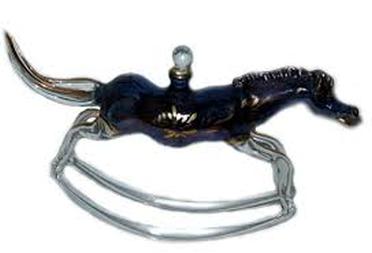

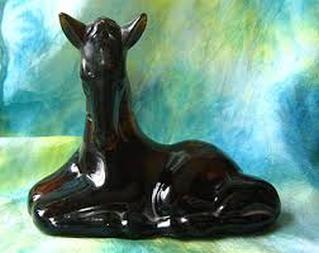
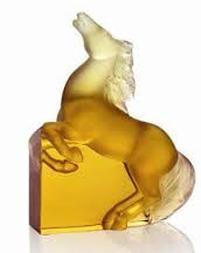
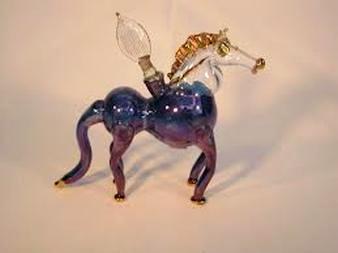

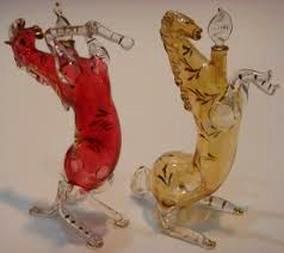
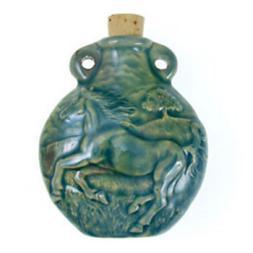

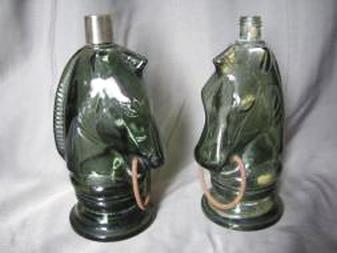
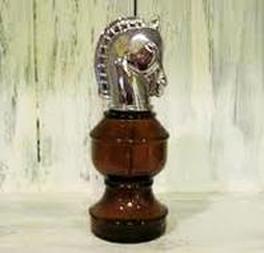
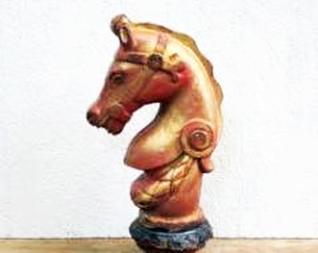
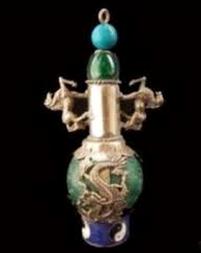

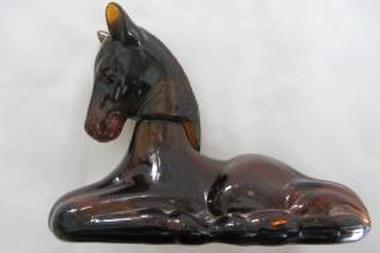
The images of the perfume bottles above are only a fraction of the creativity that is inspired by our equine pals. Like dogs, horses are one of man's best friends. There are door knockers, wine bottle labels, wine bottle holders, horse print cloth, horses in art, horse music, etc. The use of horse and related horse paraphernalia are endless in all genres of the creative process. The close relationship of man and horse transcends the centuries.